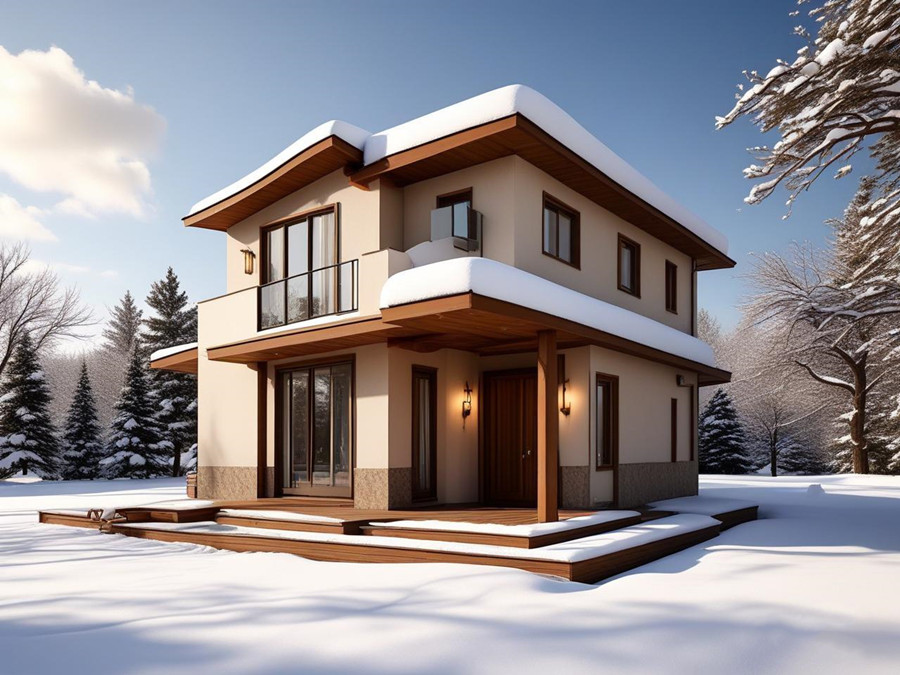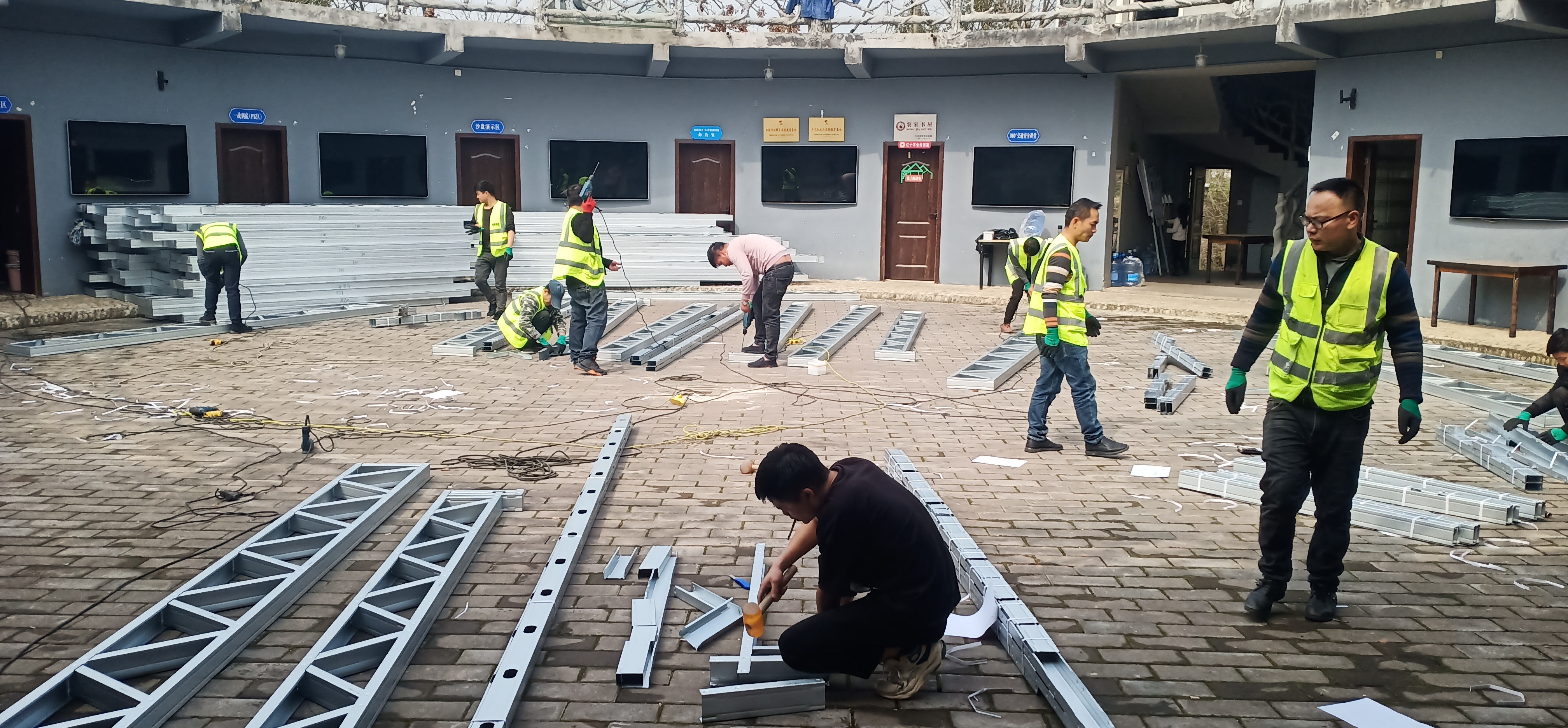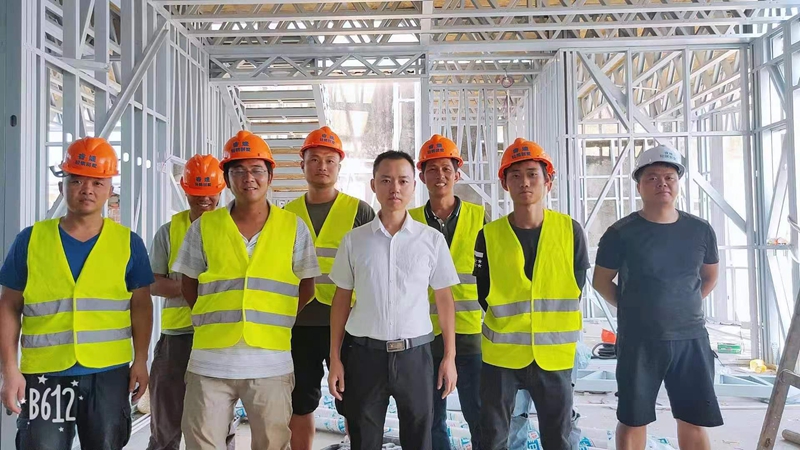Steel structure villas, while durable and modern, require meticulous insulation in cold climates to prevent heat loss, condensation, and structural vulnerabilities. Below is a detailed strategy combining material science, engineering practices, and climate-specific considerations to ensure thermal efficiency and comfort.
1. Understanding Key Challenges in Cold Climates
Before designing insulation systems, address these critical issues:
•Thermal Bridging: Steel’s high thermal conductivity creates "cold bridges," allowing heat to escape rapidly.
•Condensation Risk: Temperature differences between indoor and outdoor surfaces can lead to moisture buildup, risking corrosion and mold.
•Air Infiltration: Gaps in construction joints or seams allow cold air penetration.

2. Core Insulation Strategies for Steel Villas
A. Wall Insulation
•Spray Foam Insulation (Closed-Cell):
•Advantages: High R-value (~6.5–7 per inch), air-sealing properties, and moisture resistance.
•Application: Spray directly onto steel frames to fill cavities and block thermal bridging.
•Rigid Mineral Wool Panels:
•Fire-Resistant: Withstands temperatures up to 1,000°C, complementing steel’s fireproofing.
•R-Value: ~4–4.5 per inch; ideal for exterior sheathing or interior layers.
•Structural Insulated Panels (SIPs):
•Composite Design: Steel-skinned panels with polyurethane or EPS foam cores (R-5–7 per inch).
•Speed: Prefabricated panels reduce on-site labor.
B. Roof and Ceiling Insulation
•Insulated Metal Panels (IMPs):
•Integrated Design: Steel outer layer with polyisocyanurate (PIR) foam core (R-7–8 per inch).
•Sloped Roofs: Use IMPs to prevent snow accumulation and ice dams.
•Vented Attic Systems:
•Airflow Control: Install baffles and vapor barriers to avoid condensation in attic spaces.
C. Floor Insulation
•Underfloor Rigid Foam Boards:
•Material: Extruded polystyrene (XPS) with R-5 per inch, resistant to ground moisture.
•Installation: Place between steel floor joists or beneath slab-on-grade foundations.
•Radiant Floor Heating:
•Hybrid System: Embed hydronic pipes or electric mats within insulated floors for even heat distribution.
D. Windows and Doors
•Triple-Glazed Windows:
•U-Value: ≤0.15 W/m²K, with argon gas fills and low-emissivity coatings.
•Frames: Thermally broken aluminum or fiberglass to prevent conduction.
•Air-Tight Seals:
•Weatherstripping: Apply silicone or rubber gaskets around doors and windows.

3. Advanced Techniques to Eliminate Thermal Bridging
•Thermal Breaks:
•Materials: Install non-conductive spacers (e.g., polyamide strips) between steel members and exterior cladding.
•Continuous Exterior Insulation:
•Method: Cover the entire steel frame with rigid foam or mineral wool (R-10–15 total), bypassing gaps in stud cavities.
•Airtight Membranes:
•Products: Use polyethylene sheets or liquid-applied barriers to seal walls and roofs.
4. Climate-Specific Add-Ons
•Snow Guards and Heated Gutters:
•Function: Prevent ice dam formation on roofs in snowy regions.
•Foundation Insulation:
•Frost-Protected Shallow Foundations (FPSF): Insulate perimeter with XPS foam to depth below frost line.
•Energy Recovery Ventilators (ERVs):
•Role: Maintain indoor air quality while recovering heat from exhaust air.

Ruijie's construction team is building a steel structure villa
5. Material and Cost Comparisons
| Material | R-Value per Inch | Cost (USD/sq.ft) | Best Use Case |
| Closed-Cell Spray Foam | 6.5–7 | $1.50–$3.00 | Walls, roofs, complex gaps |
| Mineral Wool | 4–4.5 | $0.80–$1.50 | Fire-prone areas, exterior |
| XPS Foam | 5 | $0.50–$1.00 | Floors, foundations |
| SIPs | 5–7 | $7.00–$12.00 | Prefab walls/roofs |
6. Compliance and Sustainability
•Building Codes:
•IBC Climate Zones 6–7: Require minimum R-20 walls, R-49 roofs in extreme cold (e.g., Alaska, Nordic regions).
•Eco-Friendly Options:
•Recycled Content: Use mineral wool with ≥75% recycled slag or cellulose insulation.
•Low-GWP Foams: Opt for hydrofluoroolefin (HFO)-blown spray foams to reduce global warming impact.

Ruijie Steel Structure Villa Construction Team
7. Maintenance and Longevity
•Inspection: Check insulation for settling (e.g., in loose-fill attic insulation) every 3–5 years.
•Corrosion Prevention: Ensure vapor barriers are intact to protect steel from condensation-induced rust.
Conclusion: Building a Warm, Durable Refuge
Insulating a steel villa in cold climates demands a holistic approach—combining high-performance materials, precision in eliminating thermal bridges, and climate-specific adaptations. By integrating spray foam, SIPs, and advanced thermal breaks, homeowners can achieve energy efficiency, structural resilience, and year-round comfort. As steel construction evolves, innovations like smart insulation sensors and phase-change materials will further redefine cold-climate living, making steel villas a sustainable choice for the future.
Note: As of March 7, 2025, advancements in aerogel insulation (R-10+ per inch) are emerging but remain cost-prohibitive for large-scale residential use.